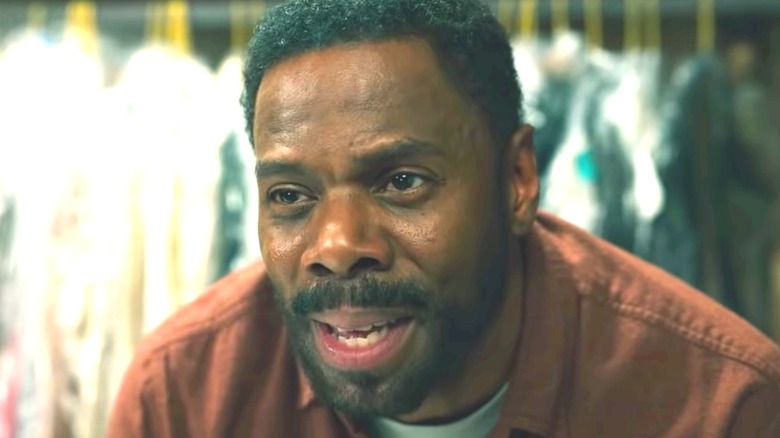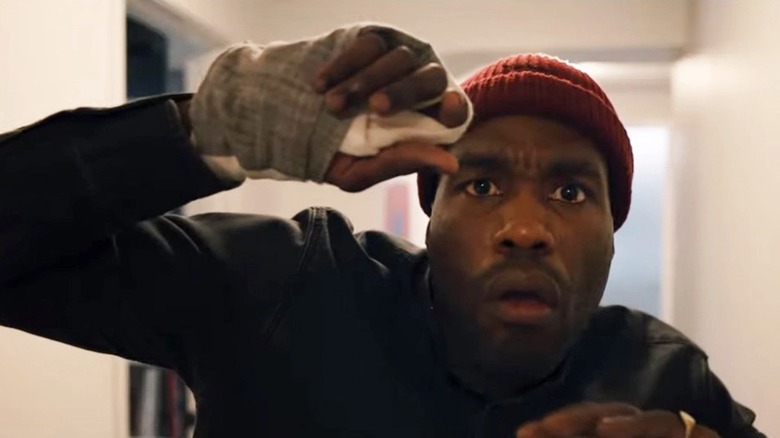The Real Way That Candyman's Absolutely Terrifying Score Was Created
"Candyman" has finally arrived, and Nia DaCosta's bone-chilling follow-up to the classic 1992 slasher flick of the same name has been scaring up solid box office returns (via Box Office Mojo) while scaring the heck out of horror movie lovers everywhere. It's also been giving new meaning to the term "socially-conscious horror," with DaCosta's horrifying tale leaning even further into the original film's racially-charged underbelly anyone could've imagined.
Those who've already endured a screening of "Candyman" would be quick to tell you the film's stunning original score is a big part of the film's intensely unsettling impact. After collaborating with the late, great experimental composer Jóhann Jóhannsson on a few projects, relative newcomer Robert Aiki Aubrey Lowe took the composer's chair on "Candyman," crafting a uniquely terrifying soundscape that feels as much like character in the film as the Candyman himself.
Lowe took an unconventional path when conjuring the music of "Candyman," one that Jóhannsson himself likely would've appreciated. There are, of course, actual instruments at play throughout Lowe's score for "Candyman." But in a recent interview with IndieWire, the composer admitted he'd taken a distinctly outside-the-music-box approach to composing the film's score by utilizing several non-traditional sound sources.
As Lowe explained, "If I'm making a score, I want to have the sounds inside of the score be an integral part." Here's what he had to say about the process of scoring 2021's "Candyman."
Candyman's score was created with non-traditional musical sources
The composer added that the narrative of "Candyman" ultimately dictated his strange approach, saying, "So much of the film deals with reality and fantasy, and I wanted to create these unrealities in which you had a lot of texture and the multiplicity of voices."
Lowe sometimes created those "unrealities" from the manipulated voices of the film's cast, "I would also take some of the actors aside during the shoot and prompt them to say 'Candyman,' and then stretch, bend, and crush the word to the point where it was unintelligible," explained Lowe. He used his own voice as an instrument as well, claiming he even fused it with the sound of buzzing insects on one track.
Lowe also used field recordings from the site of the old Cabrini Green housing projects in his final mix. He told IndieWire, "I recorded natural sounds ... there are certain sounds created by voltage and electricity that are then manipulated in a way to sound almost like acoustic instruments." As for the traditional instruments in the "Candyman" score, Lowe bent those to his own twisted will too: "Then you have acoustic instruments that are then turned on their ear, to the point where they don't sound like a contra bass or a cello or a tanpura."
The effect of Lowe's sonic experiments on "Candyman" cannot be overstated, and the score helps to ensure the film will haunt viewer's minds long after the credits roll.

